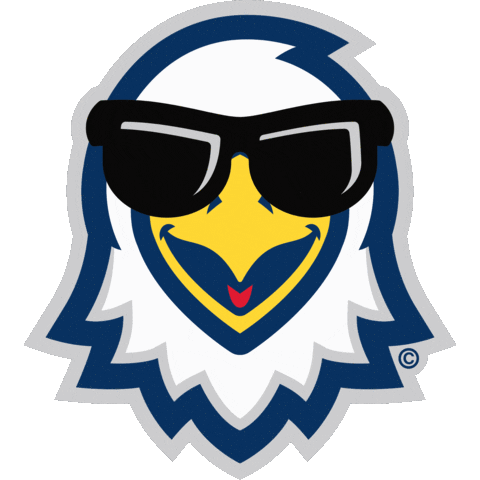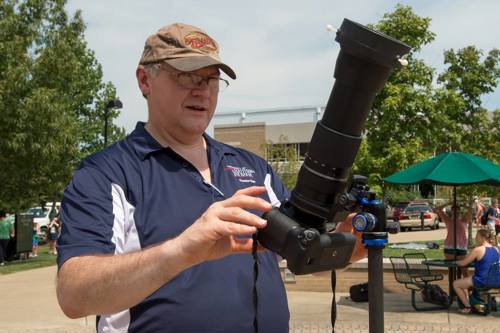
Be sure to wear protective eyewear
when viewing the eclipse!
The number one safety rule for viewing a solar eclipse is to never look at the sun with your naked eyes. This is good advice not only during an eclipse but anytime the sun is out. It is especially important during an eclipse because the normal reaction of our bodies to protect our eyes may not work during an eclipse. In general, your brain will force you to blink if you are looking at a bright object that could damage your eyes. However, during an eclipse, the sun will not be as bright as normal which means the protection your brain would normally provide may not happen. Even though the sun is dimmer as the moon starts to block it, it is still bright enough to damage our eyes. The only time it is safe to look at an eclipse with your naked eyes is during totality. At all other times during the eclipse, it is necessary to wear protective eye covering.
For the University of Southern Indiana, totality starts at 2:02:21 CDT and ends at 2:05:34 CDT. During this brief three minute window is the only time when it is safe to view the sun with the naked eye. For precise times for your location, visit this solar eclipse map guide. The times on this site are given in universal time, so you will need to convert to your time zone (CDT is UT -5).

The safety precautions discussed above are even more important if you plan to look at an eclipse with a camera, binocular or telescope. These devices are designed to focus all the incoming light on your eyes. Therefore, if looking at the sun is dangerous with our naked eyes, it is even more dangerous to use a camera, binoculars or telescope.
To safely use these devices, they must be equipped with a specially designed solar filter that will reduce the intensity of the sun’s light and make it safe to view. Solar filters should always be fitted to the front of the device. Filters that screw on the back of the device at the eyepiece still receive the full focused sunlight. Therefore, they can heat up and crack, which would allow focused sunlight to enter your eye, causing major damage. A filter at the front of the device reduces the incoming sunlight before it is focused meaning that there is not a risk of the filter heating and cracking. Solar filters should only be purchased from reputable dealers and should be inspected before each use to ensure that there are not cracks or scratches in the filter. It is highly recommended that any solar filter only be used by a trained adult to ensure the filter is being used correctly so it can provide the necessary protection.
Protective eye covering, commonly referred to as solar glasses or eclipse glasses, must be used during a solar eclipse. It is extremely important to purchase these glasses from a reputable dealer to ensure that the glasses meet or exceed the necessary safety requirements (ISO 12312-2) for solar viewing.
There have been many documented cases leading up to the last couple solar eclipses of companies selling, especially online, "solar glasses" that did not meet the safety requirements and therefore put people at risk of severe eye damage. In response to this, NASA and the American Astronomical Society, which is the professional society for astronomers and astrophysicists, have published a list of dealers that sell solar glass that meet the required standard of safety.
Buying from one of the listed dealers is the only guarantee that the solar glasses you purchase will properly protect you when viewing the sun.
For more information an eclipse safety, please visit: